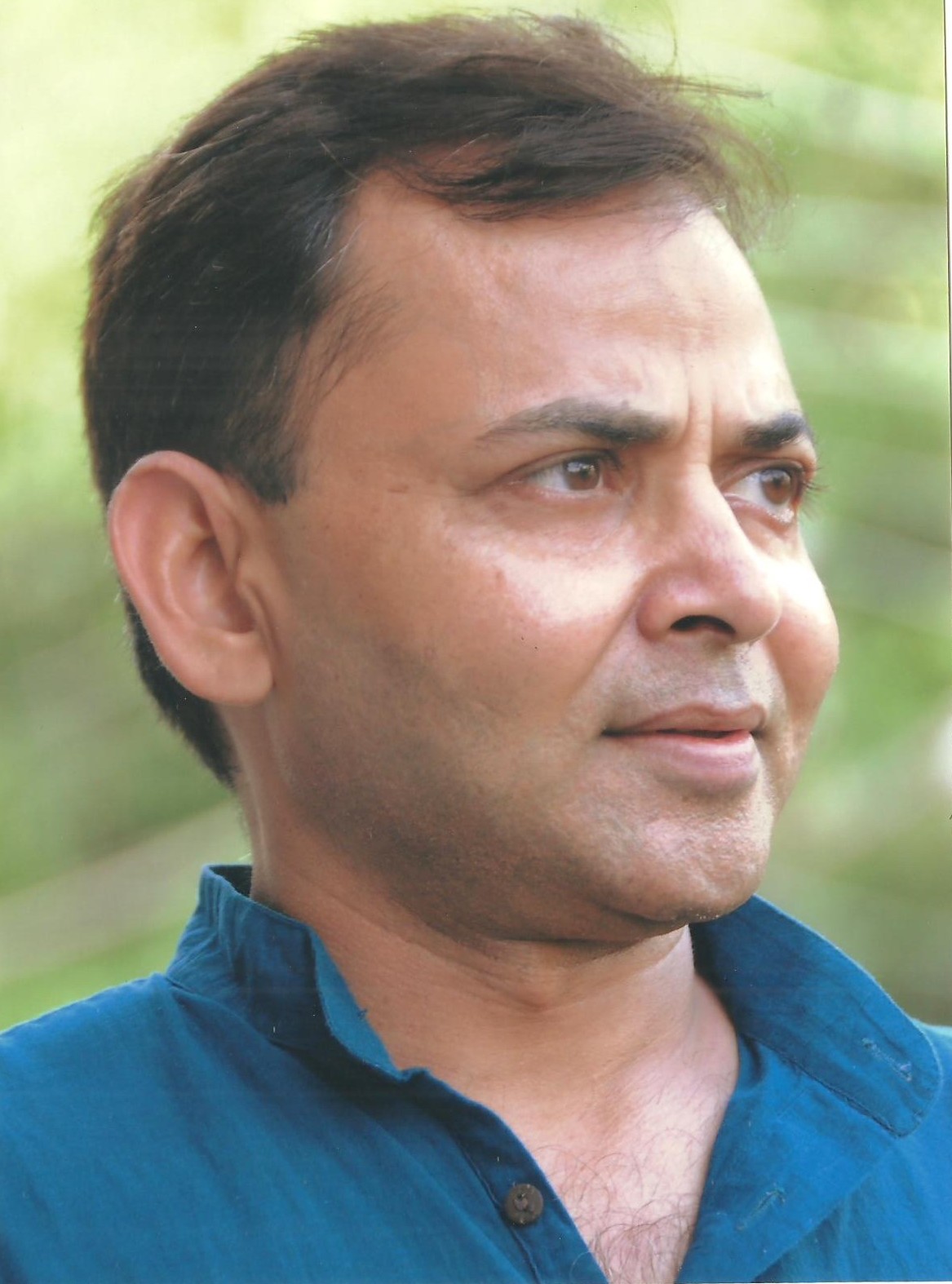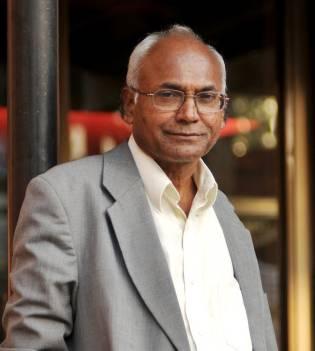Braj Ranjan Mani
 There is little awareness about a more or less institutionalised arrangement of normalising, if not glorifying, the oppressive past from which the privileged continue to derive profit and pleasure. Invented histories, myth-making, and armoury of stereotypes merge to create convenient narratives and myths which masquerade as the history of India. The suppressed stories fester the lies and keep the people away from the oppressive reality. That is why, history and culture should be debrahmanised—reconstructed—by the subjugated majority, with the understanding that ‘the master’s tools will not bring down the master’s house’.
There is little awareness about a more or less institutionalised arrangement of normalising, if not glorifying, the oppressive past from which the privileged continue to derive profit and pleasure. Invented histories, myth-making, and armoury of stereotypes merge to create convenient narratives and myths which masquerade as the history of India. The suppressed stories fester the lies and keep the people away from the oppressive reality. That is why, history and culture should be debrahmanised—reconstructed—by the subjugated majority, with the understanding that ‘the master’s tools will not bring down the master’s house’.
It is no secret that there are intellectual weapons in the arsenal of the oppressors of the world—in theology, in philosophy, in social sciences. Their function is to conceal systemic violence or injustice in order to maintain the established power and cultural equilibrium. Even fair-minded intellectuals who come from the top of the social pyramid (in which the many are miserable at the bottom) take safety in academic subterfuge. A social psychology made worse by inherited traditions of classicism, cultural conservatism, and obfuscatory religiosity does not allow the pandits to see the obvious. For example, even a cursory familiarity with the ancient brahmanic texts leaves little doubt that the Itihasa–Purana and Dharmashastras were written by the enemies of dalit-bahujans who were stigmatised as shudras and atishudras. The shudra (the debased caste of servants) was so constructed by the historical power of brahmanism. But the scholars who spend a life-time in researching the past remain forever blind to this reality, and the historical truth of upper-caste violence, both social and ideological. Their scholarship somehow never comes to grasp the point that brahmanical forms of knowledge were critical in the establishment and maintenance of caste. The pattern does not change when we move forward to the history of modern India. A benign amnesia shrouds the conservative and anti-dalit-bahujan strands of Indian nationalism, which permits academic and popular projections of the essentially upper-caste leaders such as Gandhi, Nehru and Tilak-Savarkar as non-partisan leaders.
Nothing can be more hypocritical than the claims of academic neutrality and objectivity (with the tantalising premise of not ‘stating’ anything) that is often invoked by ‘disinterested’ social science. There is a writer behind every writing, and it matters from where one writes, to whom one writes, and with what objective and perspective. As I have argued elsewhere, being neutral in an unjust society is to actively support injustice. The ‘neutral narratives’, their plurality and intellectual splendour notwithstanding, provide the mental furniture, even the life-blood, of reproduction of caste–class inequalities (Mani 2014). In India, this problem is particularly pernicious due to the longstanding brahmanic control over knowledge, despite some challenging attempts from below in recent times. That the higher echelons of academia and knowledge-construction have been monopolised by vested interests is a fact—and this fact is the problem.
This applies to the whole intellectual grove that reproduces India’s history and culture in the brahmanic mould in a variety of ways. It explains the absence of any fundamental questioning of traditional structures, normalisation of caste and brahmanism, the identification of the privileged-caste culture with Indian culture, institutionalised exaltation of the Mahatma and the Pandit, and new fabrications to legitimise the dominant (‘Indian’) ideology. If you are critical of caste and brahmanism, you are Euro-centric and guilty of denigration of the civilisational ethos of India. Any suggestion that caste and race, brahmanism and colonialism are beastly kith and kin is still heresy. Wonderful theories, rich with erudition and documentation—such as caste is a colonial construction: almost a fabrication of the Population Surveys and Census Reports (Roland Inden 1990; Nicholas Dirks 2002); communalism is an ‘Orientalist term’, produced as ‘a form of colonialist knowledge’ (Gyan Pandey 1990); secularism constitutes an ‘alien cultural ideology’, ‘a gift of Christianity’, and ‘there are no fundamentalists or revivalists in traditional society’ (T. N. Madan 1987)—are being invented under the banner of postcoloniality of the ‘indigenous’ to ‘justify and defend the innocence which confronted modern Western colonialism’ (Ashis Nandy 1983). The ‘innocence’ here involves a complete elision of centuries of violence of caste, class, and patriarchy. In other words, the colonial tragedy returning now as the postcolonial farce (to paraphrase Marx) allows the brahmanic elite to mystify the caste–class exploitation and masquerade as the oppressed rather than the oppressors.
One can well imagine how comforting such ‘primal innocence’ can be to the custodians of ‘community’ and ‘culture’ because colonial crimes pale in comparison with the crimes of caste and brahmanism which have victimised, stigmatised and inferiorised the dalit-bahujans (who constitute more than 80 per cent of Indian people) for almost three thousand years. In other words, a deeply devious, neo-brahmanic impression is being created (by the resource-rich academics, many of whom are, ironically, ensconced in the Euro-American universities) that all the problems of contemporary India emanated from the Western colonialism. As Aijaz Ahmad (1992) articulated it memorably, ‘Colonialism is now held responsible not only for its own cruelties but, conveniently enough, for ours too.’

The influence which entrenched interests still exert over all channels of communication—from the elite academia to the mass media—ensures a perpetual ambience of brain-washing. The opinion business, the persuasion industry range from sophisticated academic treaties to the stereotyped crudities of the infotainment industry. Invented histories, myth-making, and an armoury of stereotypes merge seamlessly to create convenient narratives and myths which masquerade as history of India.
If any historical discourse is badly in need of deconstruction, an unravelling of its social and ideological roots, it is the established history of caste and brahmanism. Its roots may be traced to entrenched interests who benefited most from the brahmanical social order, but the ideology they projected with cunning and persistence have taken in a surprisingly wide variety of people ranging from the very victims of the caste–class nexus to foreign academics who accept the views projected in brahmanic narratives, both ancient and modern, at their face value. The seduction and insidious nature of the brahmanic indoctrination is truly amazing. Swami Vivekananda, who, like many of his castemen, was humiliated for his ‘shudra’ identity, remained convinced—fanatically—about the superiority of the brahmanic religion and classical caste system. Arnold Toynbee, a British historian, who was certainly not an Orientalist propagandist like Max Müller, ignored social structures and cultural reality, and put on record his sublime belief that Hinduism and the Hindu worldview ‘is at once more natural, more human, and more scientific’ than all other religions. One finds the same superlative statements from many famous and not-so-famous figures about the Vedic–brahmanic achievements of India surpassing the West in the fields of naturalism, humanism, and scientific rationalism.
As the myths about India penetrated beyond the borders of India in modern times, the idle and empty cant of brahmanism (that hides now behind the hydra-headed facade of Hinduism or Indian culture) persists in multifarious forms. The obscurantist notions about India—such as Hinduism is 5,000 years old; Vedanta contains the ultimate truth, and has the answer to the most complex challenges of humanity; Hindu culture is inherently tolerant and peaceful, it is more emotionally alert to fellow beings, and cares more for women and family; Hinduism alone is capable of producing an ‘apostle of truth and non-violence’ like Gandhi (see Attenborough’s Gandhi and the usual hagiographical portrayals in the global Gandhi industry), and, is, thus, the culmination of the cultural evolution of mankind—are taken seriously not only by an army of illiterates but also the august gatherings of academics.
It seems there is an intrinsic connection between the political Hinduism (of the semi-literate, vulgar fanatics who demand that the past, present and future of India be constituted around a notion of Hinduness or Hindutva) and the brahmanic Hinduism of academic study that we find in the writings of highly learned scholars who are in command of the pure epistemology and classical Sanskrit tradition. Where there is any cognizance of caste, class and patriarchal oppressions, they are finely wrapped in explanations produced by masters in the art of explaining away. Even those who accept the injustices of caste and brahmanism in the past, hasten to add the pointlessness of raking them up, as if those things and their consequences have become history. There is little awareness about a more or less institutionalised arrangement of normalising, if not glorifying, the oppressive past from which the privileged continue to derive profit and pleasure.
The suppressed story mothers the lies. That is why the stories of Ekalavya, Shambuka, and Sita should not be forgotten. (Symbolic characters like them are few in the epics, but there must have been millions in the real life. Above all, their descendants have barely risen above the struggle for survival and they constitute a significant part of India’s billion-plus population.) That is why the distorted history should be countered wherever one encounters it. Above all, history and culture should be reconstructed by the dispossessed, with the understanding that ‘the master’s tools will not bring down the master’s house’.
The child who reads in her history book of Dronacharya’s brilliance as a teacher and Kautilya’s wonderful statecraft should also be told that those men were crooks by any definition. The representation of Hindu dharma as a uniquely indigenous way of dispensing ‘righteousness’, ‘justice’ and ‘equality of all’ should not conceal the fact of its exclusionary norms of caste and patriarchy that glorified the suppression of dalit-bahujans and women. Hagiographical accounts of Gandhi’s life should not omit his support for caste and brahmanism, and his charming suggestion that ‘a shudra who serves the higher castes as a matter of religious duty and who will never own any property is worthy of the world’s homage. . . .The gods will shower their choicest blessings on him’ (Gandhi [1934] 1993).
Our history is replete with spectacular frauds of ‘the good and the great’. Perhaps it would do the resilient ‘Indian psyche’ no damage if the false gods are a little mocked, if the great foundation of lies and ignorance on which our civilisation rests are a little unsettled, if the continuing glorification of Veda-Upanishad is at least a little counterbalanced by some knowledge of how brahmanism was constituted and institutionalised, and how there has been a long contestation against it from the days of the Buddha to the present. The dominant narrative of a spiritual culture, communicated for centuries through brahmanic discourse, has apparently succeeded in its effort to brush under the carpet the red tooth and claws of brahmanism. But hiding the hideousness of caste and brahmanism serves only the hideous purpose: the subject needs to be opened, debated and discussed. Not just because they are responsible for so many of continuing inequalities, divisions and brutalities, but mainly to inoculate, unite and emancipate the oppressed because that past is not yet past.
Excerpted from the preface to the extensively revised second edition of Debrahmanising History: Dominance and Resistance in Indian Society [2015], published recently by Manohar.
~~~
Braj Ranjan Mani is one of India’s unconventional scholar-activists and the author most recently of Knowledge and Power: A Discourse for Transformation (2014).









